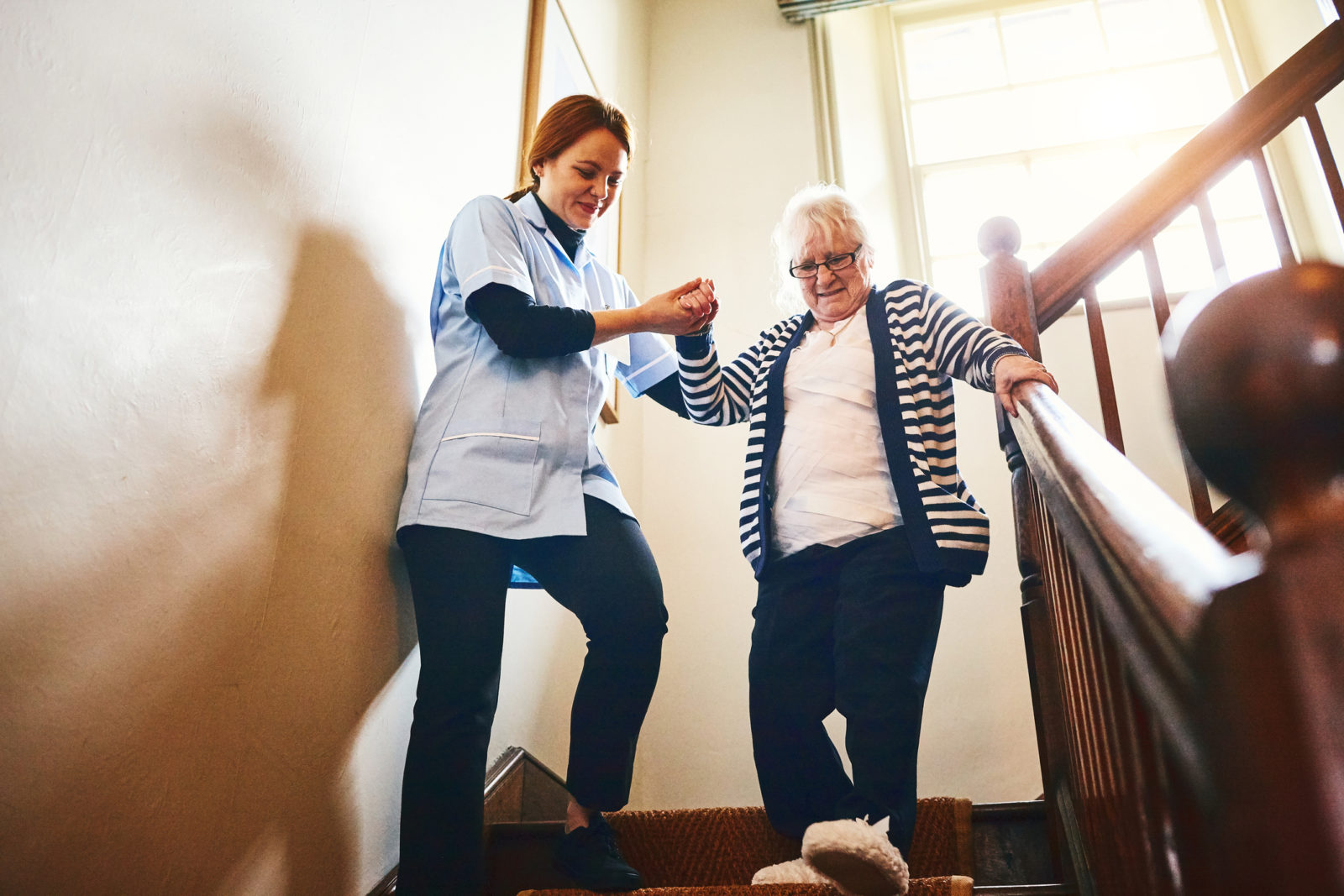The Danger of Falls and How to Prevent Them

September 22 is Fall Prevention Awareness Day. Focusing attention on this issue is important, because falls are the leading cause of injuries – both fatal and nonfatal – among older Americans. According to the Centers for Disease Prevention and Control (CDC), one-fourth of adults age 65 or older falls each year. Every 11 seconds, an older adult visits the emergency room because of a fall and every 19 minutes, an older adult dies from a fall.
While the risk of falling increases as we age, it’s important to note that falling is not an inevitable part of aging and there are many things we can all do to prevent our risk of falling. In addition to aging, some of the risk factors of falling include:
- Vertigo, labyrinthitis or other inner ear condition that may affect balance
- Medications that cause dizziness or taking too many medications
- Hazards in the home, such as clutter, loose rugs and wet surfaces
- Poor eyesight
The good news is that falls are highly preventable. Here are some tips to keep you or a loved one safe:
Find an exercise routine that works for you
Exercise can provide numerous benefits: squats, leg extensions and toe stands can strengthen the legs, providing more support when walking; exercises such as tai chi can help improve balance; and walking can improve strength, balance and endurance. Be sure to check with your physician before starting and exercise routine. If you experience any pain, dizziness or trouble breathing during or after exercise, talk with a doctor, nurse or physical therapist.
Do a medication checkup
Many medications have side effects, which can include dizziness or drowsiness, which can increase your chance of falling. Overmedication is also a problem common in seniors. Talk with your doctor or pharmacist on a regular basis to see if there are alternate medications you can take and to ensure the drugs you’re taking are causing problematic interactions.
Make your home safer
Almost half of all falls happen in the home. You can help reduce the risk by making your home safer.
- The bathroom is a particularly risky place for falls. Install handrails in the bathroom and use nonskid bath mats in the tub shower.
- Don’t limit nonskid flooring to the bathroom – use it throughout the house.
- Remove clutter and arrange furniture so there’s a clear pathway for people to move freely.
Have your vision checked annually
Poor vision increases the likelihood of a fall. Visit your ophthalmologist for a vision test and to check if there are any other issues, like glaucoma or cataracts, which may be causing your problems.
Reduce your risk by getting some help
Many falls occur while people are reaching to put away groceries, scrubbing away a stain high on the wall, walking the dog, or even bathing. Consider hiring a home care professional to assist you with daily activities that put you at greater risk of falling. An Aging Life Care Professional® can recommend resources and develop a care plan that can help reduce your risk of falling.
Download our Fall Prevention Fact Sheet
![LifeCare Advocates [logo]](https://www.lcadvocates.com/wp-content/uploads/sites/270/2017/11/logo.png)